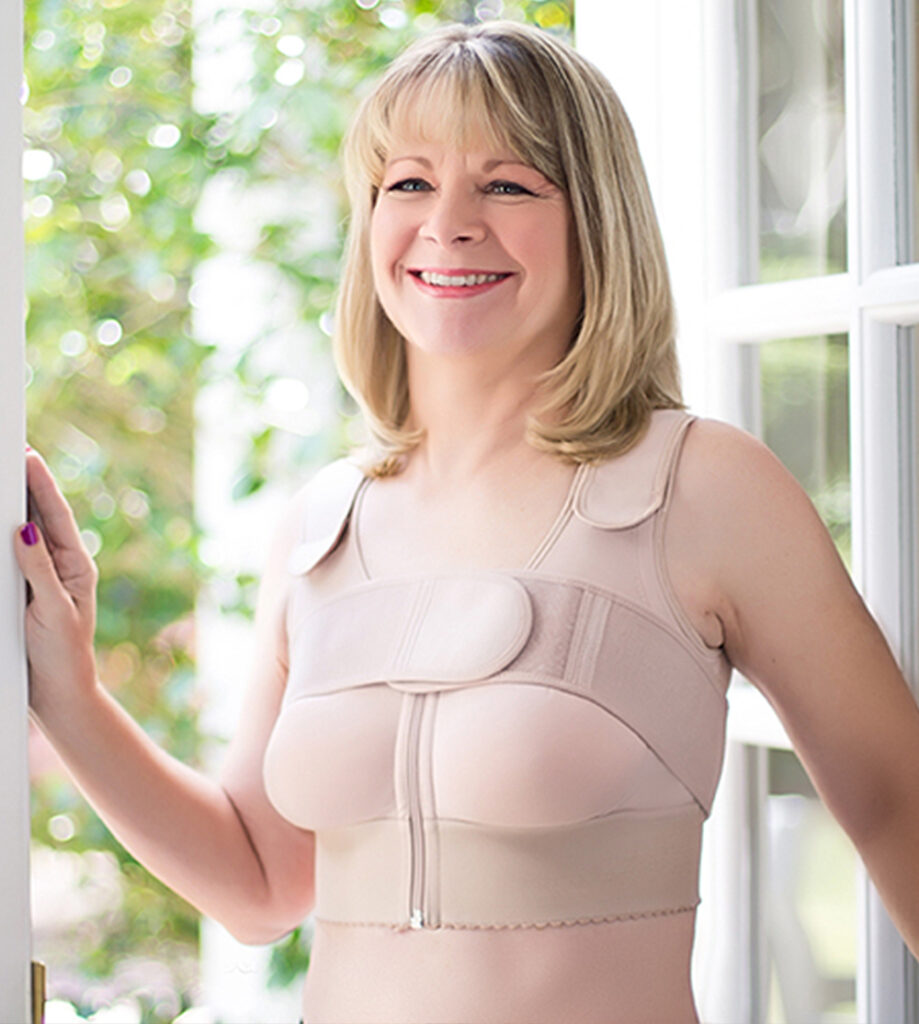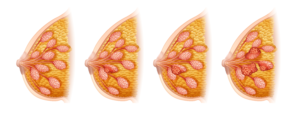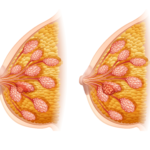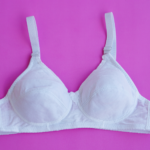What is Lymphedema?
Your surgeon may have removed lymph nodes during your mastectomy or treated certain areas with radiation during your breast cancer treatment. As a result, there is a possibility that after your surgery (months or even years later), you might develop lymphedema, which is a condition where the removal of lymph nodes creates an imbalance in your body’s lymph and causes swelling. Arms, genitals, belly areas, and legs are common lymphedema areas. Prevention and treatment are possible with proper care, so it’s essential to know how to address this condition to prevent things like sores or infections from forming because of that lymph imbalance.
Good skincare, regular exercise, massage, and consistent compression (with compression sleeves or other compression garments) can lower your risk for lymphedema).
There are different ways to apply compression. They include:
- compression garments
- compression wraps
- compression bandaging
The pressure helps the trapped lymph fluid move and flow through the vessels. The compression garment wraps or bandages also act as an extra force for the muscles to work against, helping the fluid drain out of the area. All garments and bandages are measured and fitted by a trained lymphedema specialist.
A compression bra, often called a post-surgical or medical-grade bra, is a unique undergarment meticulously designed to exert consistent and gentle pressure across the breast area. Its primary purpose is to facilitate the healing process, especially after breast surgery. Made from soft and sturdy materials, these bras ensure that the breasts are well-supported, minimizing the risk of post-surgical complications.
Compression Treatment
Compression treatment aims to control and reduce the swelling caused by a build-up of lymph fluid (lymphedema). It puts pressure on the swelling area and encourages the movement of lymph fluid around the lymph vessels. The pressure needs to be even but firm in the swollen area. Compression may also help to control pain caused by the swelling.
Compression Garments
Compression garments help prevent lymphoedema from getting worse and can reduce mild to moderate swelling. If you have severe lymphedema, your specialist recommends multi-layered bandaging first.
The garments vary in how much pressure they put on the tissues. They should:
- cover the whole area of the swelling.
- allow you to move normally.
- do not have any baggy or loose areas
- be comfortable, giving firm support that is not too tight
- be chosen just for you
- be replaced about every six months – they lose shape with washing, which affects the amount of compression.
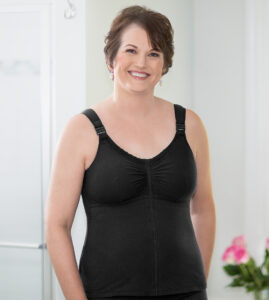
You should wear the garments during the day and take them off at night unless your specialist tells you to keep them on longer. Put them on as soon as possible in the morning. You need to wear them when you’re doing any form of exercise. The compression garment should be comfortable and not cause pain, numbness, tingling, or changes in your skin color. If you notice any of these, remove the garment and contact your lymphoedema specialist as soon as possible.
Compression Bras Differ from Regular Bras
Breast Care Bras Include:

- Purpose: While regular bras are designed for daily wear and aesthetics, compression bras are tailored for therapeutic reasons, primarily aiding in post-surgical recovery
- Design: Compression bras are more utilitarian in design, focusing on comfort and support rather than style or allure
- Support: Compression bras offer a high level of support. They ensure that the breasts remain stationary, reducing the risk of strain on healing incisions.
- Duration of Wear: Post-surgery, patients might be advised to wear compression bras continuously, even during sleep, for a specified duration. This level of continuous wear is not typical with regular bras.
- Adjustability: Many compression bras come with multiple adjustment points, allowing for changes in breast size due to swelling or the natural healing process
- Front closure bra with drain support
- Bra with prosthesis pocket
Benefits Of Compression After Surgery
- After your procedure, your plastic surgeon should provide you with a fitted compression garment approved for medical use at no additional cost. This garment should always be worn for the designated duration and only be removed when bathing or showering.
- After your initial follow-up appointment, your surgeon will advise you when and for how long you can begin removing the compression garment. Take time with this process, as properly wearing your compression garment after surgery offers several significant benefits.
Some benefits of wearing surgical garments include:
Reduces Swelling
- A compression garment can help to minimize post-operative swelling and related discomfort. Maintaining constant pressure on the surgical site will prevent excess build-up of subcutaneous fluid – or swelling – and encourage your body to re-absorb the fluid that accumulates.
- The more you reduce swelling, the faster your body can heal. The quicker your body heals, the sooner you will see your intended results.
- If the garment becomes too loose after the swelling goes down, talk to your surgeon to be fitted for a smaller size.
Reduces Bruising and Swelling
- Disruption of the blood vessels is an average side effect of any surgical procedure. When blood vessels rupture, blood leaks into the surrounding tissue, resulting in bruising around the surgical site.
- Compression garments help apply even pressure across the treatment area, preventing excess fluid buildup. This allows your body to absorb any fluid; without this, swelling can linger longer than necessary.
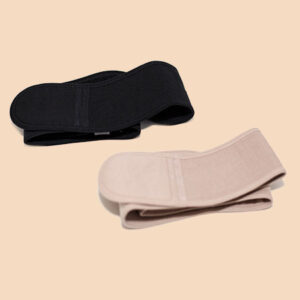
Minimizes Visible Scarring
- Your surgeon will aim to perform your procedure with the least amount of scarring possible, often by strategically placing incisions in areas that are not very visible. That said, you may still experience scarring, the extent of which can vary depending on factors such as your genetics and the surgical technique used.
- The pressure applied by a compression garment will help to soften and flatten the area, gradually reducing the appearance of scars.
Improves Comfort
- Compression garments are generally made with elastic and nylon, so they can stretch to support your tissue. This makes the healing and recovery process more comfortable while protecting the surgical site.
- Your compression garment should fit snugly enough to perform its function but should not be so tight that it is uncomfortable or restricts breathing. Talk to your surgeon if your custom-fit compression garment is causing pain or discomfort.
Helps Prevent the Formation of Blood Clots
- Blood clotting is a significant risk with any breast reconstruction procedure. Fortunately, surgical garments can help with circulation, reducing your risk of complications.
Reduces Risk of Infection
- Rest is a critical component of the postsurgical recovery process, allowing your body to heal correctly. However, limited mobility after surgery may result in poor circulation, leading to the development of blood clots.
Reduces Recovery Time and Accelerates Healing
- Patients who wear compression garments can anticipate a comfortable and quick recovery. By controlling post-operative swelling and discomfort, the recovery period can be shortened, and patients can resume normal activities sooner.
Enhances Results
- To achieve the best aesthetic results after breast reconstruction surgery, these garments ensure that surgical incisions heal correctly and that your skin more effectively conforms to its new contours.

Essential Features of Compression Bras
- Breathable Fabric: Most compression bras are crafted from materials that allow the skin to breathe, ensuring comfort even when worn for extended periods.
- Comfortable fabric: Breathable fabrics and natural fibers will prevent sweating.
- Front Closures: Compression bras often feature front closures, unlike regular bras that fasten at the back. This design makes them easier to put on and take off, especially when mobility is restricted post-surgery.
- Adjustable straps and closures: This helps achieve the closest and most comfortable fit.
- Wide Straps: Compression bras typically have wider straps than regular bras to distribute pressure evenly and reduce the risk of digging into the skin.
- Wide bands: Wide bands across the shoulders and beneath the breasts ensure the bra will stay put and won’t dig into your skin.
- No Underwires: While underwires in regular bras provide shape and support, they can harm post-surgery healing. As a result, compression bras are usually wire-free.
- No underwire: This prevents rubbing on incisions and scar tissue.
- No seams: Wearing a seamless bra means less irritation for sensitive and tender skin.
- Minimal detailing: Comfort is vital, so avoid itchy lace.
- Find your style: Just because you had surgery doesn’t mean you can’t feel like yourself.
Where Can I Buy a Bra After Breast Cancer Surgery?
An experienced bra fitter will fit and advise you on your size and a suitable bra. As your shape and size may change during and after treatment, it’s a good idea to check your bra size before buying new bras. An experienced bra fitter will often have specialist training and experience in helping women who have had or are going to have breast surgery. It might be helpful to call ahead and make an appointment to ensure a trained fitter can see you. You can buy post-surgery or mastectomy bras from specialist suppliers, in person or online, that are designed for women who have had their breast(s) removed.
Summary
While both compression and regular bras support the breasts, their specific functions, design elements, and intended duration of wear set them apart. For anyone undergoing breast surgery, understanding the benefits of a compression bra is vital to ensuring a smooth and efficient recovery.
Underwire bras should be avoided, as they can dig into the skin. Check with your healthcare provider or surgeon before wearing underwire bras again.
REFERENCES
ACS – American College of Surgeons
BreastCancerNow.Org
CancerResearchUK
VeryWellHealth

